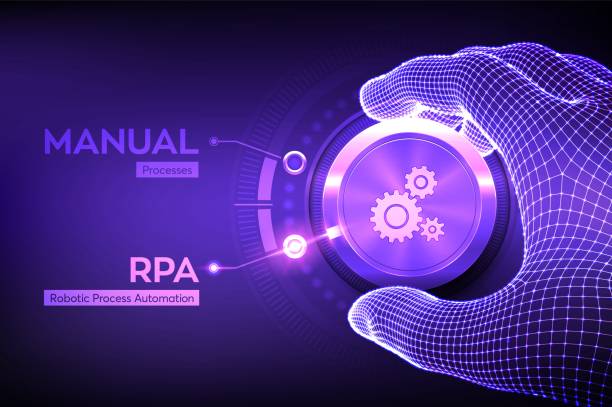
Robotic Process Automation RPA
Robotic Process Automation.

What processes are relevant to RPA?
Robotic process automation is a versatile, scalable technology that can be applied throughout the enterprise in a variety of industries. Top candidates for optimization with RPA are typically:
- Consistent and routine
- High volume
- Prone to human error
- Limited in requiring a person to make a decision
- Manual data entry
In many cases, RPA can bring immediate value to core business processes including:
- Payroll
- Employee status changes
- New hire recruitment and onboarding
- Accounts receivable and accounts payable
- Invoice processing
- Inventory management
- Report creation
- CRM data updates
- Software installations
- Data migration
- Vendor onboarding
For example, if a wealth management firm needs to update CRM data with contact details from a spreadsheet, RPA can record the actions that need to be replicated, map fields between the two interfaces and automate this repeatable task, saving hours of employees’ valuable time.
Robotic process automation (RPA) doesn’t involve a mechanical robot. Instead, it’s a type of bot that can execute a set of instructions on a physical or virtual machine, like a computer or a piece of software. It automates simple processes so human action is no longer required to complete the task.
Powering the era of digital transformation
Automation Process that anyone can use for any business process
One of the immediate benefits of robotic process automation is its ability to integrate systems where gaps previously existed. Enterprises that rely on legacy systems or third-party, external sites for everyday operations but currently do not have the resources or the means to integrate them using other methods can deploy bots to do so. Fast to deploy and easy to update, syncing data and processes without human intervention. Bots enable organizations to quickly deploy integrations that sync data and processes without human intervention, filling in gaps between systems for more complete, end-to-end automation solutions.
RPA as part of the digital transformation journey From Kayzed
Why should I implement RPA?
Robotic Process Automation has a positive snowball effect on business operations and outcomes. RPA delivers measurable business benefits right out of the gate—think cost reduction, greater accuracy, delivery speed—then continues to add value as it picks up momentum and spreads across the organization. RPA improves business outcomes like customer satisfaction and enables competitive advantages by freeing humans to do what they do best—solving problems, improving processes, conducting analysis, and other value-added work—resulting in higher employee engagement and new revenue opportunities..
This is the most worrying part for most clients going through or needing a turnaround; it means that incoming cash flows will change completely. We help ease these issues through fantastic financial projections and a realistic view of what can be accomplished.

